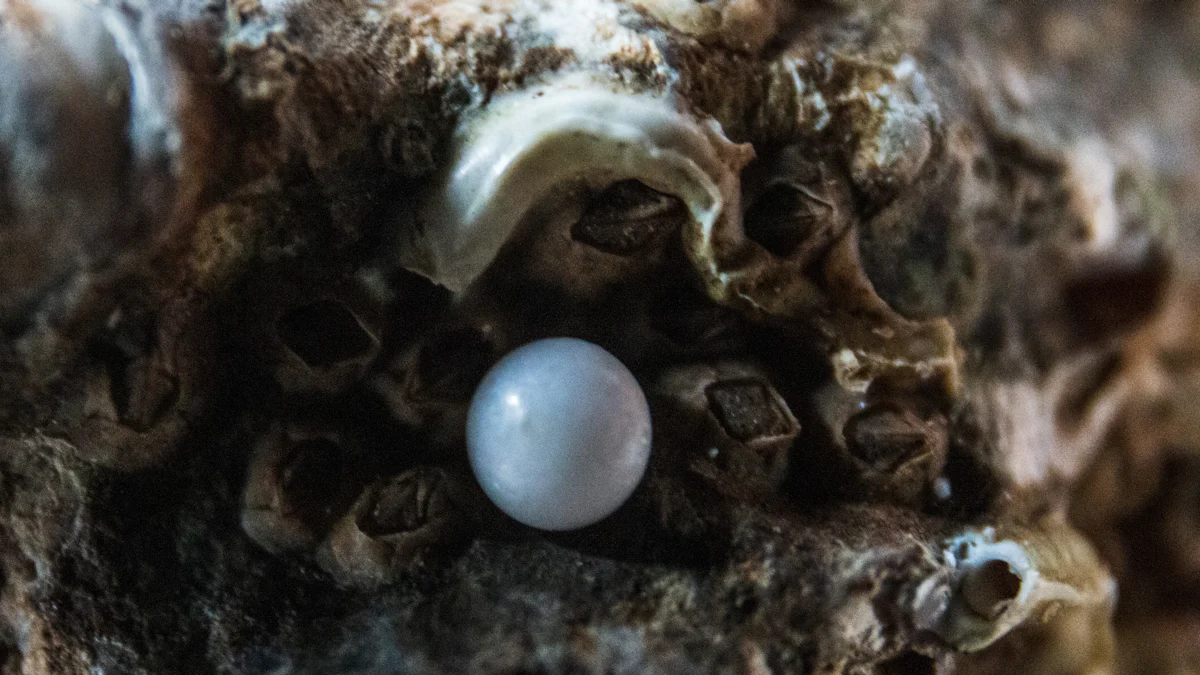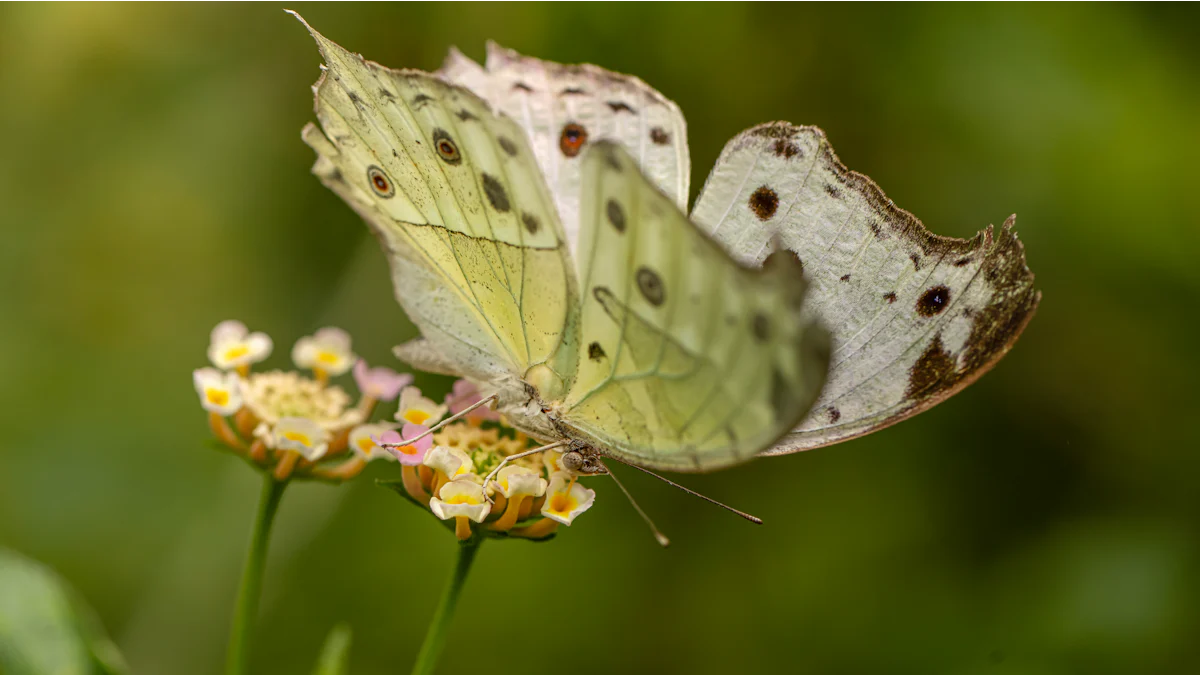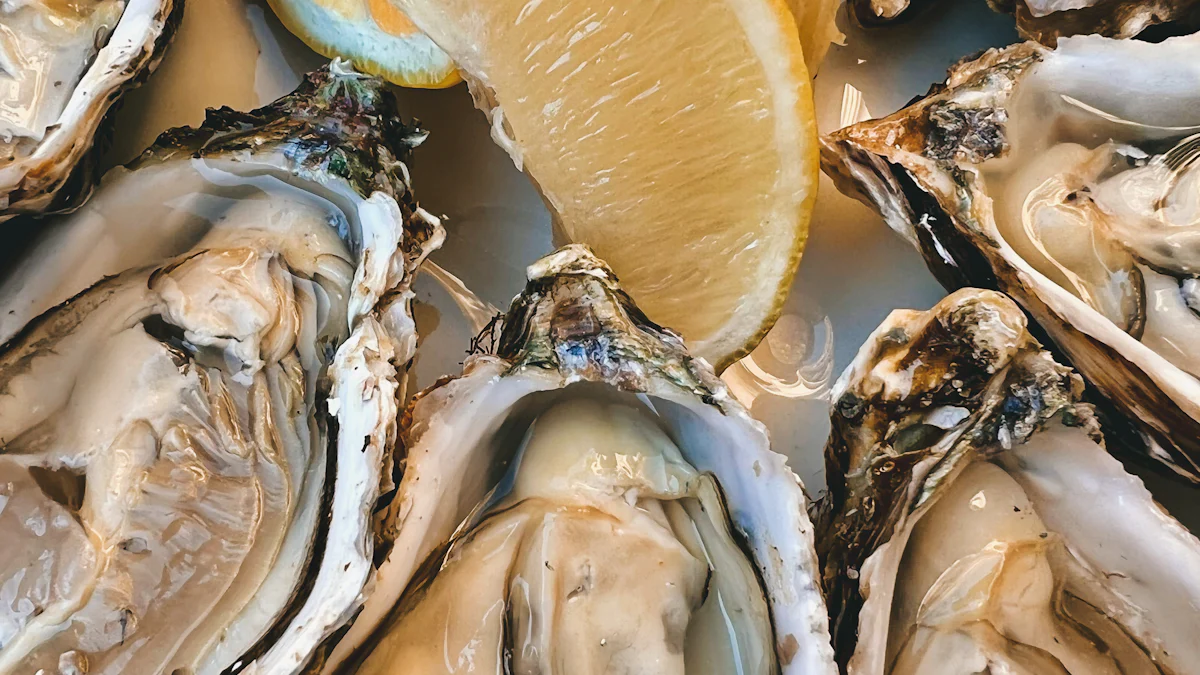Mother of Pearl vs Pearl: Key Differences Explained

Mother of Pearl and Pearl each have their own allure and elegance. When comparing Mother of Pearl vs Pearl, it's fascinating to note the distinctions between these two exquisite materials. Mother of Pearl, known for its use in decorative pieces, showcases a wide, iridescent surface. On the other hand, Pearls are highly valued for their rarity and distinctive round shape. The global pearl jewelry market is experiencing significant growth, with projections indicating an increase from around USD 13 billion in 2024 to USD 28 billion by 2032. This expansion underscores the charm and importance of these gemstones in the realms of fashion and ornamentation.
Definitions and Origins
What is Mother of Pearl?
Definition and Composition
Mother of Pearl, also known as nacre, is the iridescent lining found inside mollusk shells. This material is a composite of organic and inorganic substances. It includes calcium carbonate and proteins, which give it a unique glow. Unlike pearls, Mother of Pearl forms a continuous layer inside the shell.
Natural Formation Process
Mollusks produce nacre to protect themselves. When an irritant enters the shell, the mollusk secretes layers of nacre over it. This process creates the shiny inner shell layer known as Mother of Pearl. It serves as a protective barrier, showcasing its beautiful, reflective surface.
What is a Pearl?
Definition and Composition
A pearl is a gemstone formed entirely from nacre. It consists of many layers of this substance, which encase an irritant that has entered the mollusk's shell. This layering gives pearls their smooth and lustrous appearance.
Natural Formation Process
Pearls form when a foreign object, like a grain of sand, enters a mollusk. The mollusk responds by coating the irritant with layers of nacre. Over time, these layers build up, creating a pearl. This process can take several years, resulting in a beautiful and valuable gemstone.
Appearance and Characteristics

Visual Differences
Color and Luster
When you compare Mother of Pearl and Pearl, you'll notice distinct differences in color and luster. Mother of Pearl often displays a wide range of colors, offering a vibrant and iridescent surface. This quality makes it popular for decorative items. Pearls, however, are renowned for their smooth, lustrous appearance. Their subtle elegance often makes them more desirable in jewelry.
Texture and Patterns
Mother of Pearl features unique textures and patterns. Its surface can vary widely, providing a rich visual experience. Pearls, on the other hand, have a consistent texture. Their smoothness and uniformity contribute to their classic appeal.
Physical Properties
Hardness and Durability
In terms of hardness, both materials share similar properties. However, you might find Mother of Pearl slightly more durable due to its layered structure. This makes it suitable for various applications beyond jewelry.
Size and Shape Variations
Mother of Pearl generally covers larger areas. Its bigger surface area allows for more versatility in design. Pearls are typically smaller and rounder. Their size and shape make them ideal for creating elegant beads and necklaces.
Availability and Sources

Mother of Pearl Sources
Common Mollusks
You can find mother of pearl in the shells of various mollusks. Oysters, abalone, and mussels are the most common producers. These creatures secrete nacre along the inner walls of their shells. This process creates the beautiful, iridescent lining known as mother of pearl. Unlike pearls, which form around an irritant, mother of pearl lines the entire shell, making it more widely available.
Geographic Locations
Mother of pearl is found in many parts of the world. You’ll often see it in regions where mollusks thrive. Coastal areas with abundant marine life, such as the Pacific Ocean and the Indian Ocean, are rich sources. Freshwater sources, like rivers and lakes, also contribute to its availability. This widespread presence makes mother of pearl more accessible compared to pearls.
Pearl Sources
Types of Pearls
Pearls come in various types, each with unique characteristics. You might encounter freshwater pearls, which are cultivated in rivers and lakes. Saltwater pearls, like Akoya, South Sea, and Tahitian, grow in oceans. Each type offers different colors, sizes, and luster, adding to the allure of pearls in the mother of pearl vs pearl comparison.
Geographic Locations
Pearls are rarer and more geographically specific. Major pearl-producing regions include Japan, known for Akoya pearls, and Australia, famous for South Sea pearls. Tahiti produces the exotic black pearls. These locations provide the ideal conditions for pearl cultivation, making pearls more valuable and sought after.
Value and Uses
Economic Value
Market Demand
You might be surprised to learn that the global pearl jewelry market is booming. It's projected to grow from USD 13 billion in 2024 to USD 28 billion by 2032. This growth reflects a strong consumer interest in pearls, driven by rising disposable incomes and advancements in the pearl industry. Mother of Pearl, while not as valuable as pearls, still enjoys steady demand due to its affordability and versatility.
Price Factors
Market volatility can also affect Market volatility can also affect prices, as supply and demand fluctuate. Mother of Pearl, being more abundant, tends to have a more stable pricing structure.
Common Uses
Jewelry and Decoration
Both Mother of Pearl and pearls find extensive use in jewelry. You’ll see pearls in necklaces, earrings, and bracelets, prized for their elegance and timeless appeal. Mother of Pearl, with its iridescent beauty, often adorns watch faces, buttons, and inlays in furniture. Its larger surface area allows for creative designs in decorative items.
Cultural and Historical Significance
Pearls have held cultural significance for centuries. They symbolize purity and wealth in many traditions. Historical figures often wore them as a status symbol. Mother of Pearl also carries cultural value, used in various artifacts and religious items. Its reflective quality has made it a favorite in artistic expressions across different cultures.
Care and Maintenance
Caring for Mother of Pearl
Cleaning Techniques
To keep your Mother of Pearl items looking their best, clean them gently. Use a soft, damp cloth to wipe away dust and dirt. Avoid harsh chemicals or abrasive materials, as they can damage the surface. If needed, a mild soap solution works well. Rinse thoroughly and dry with a soft towel.
Storage Tips
Store Mother of Pearl pieces in a cool, dry place. Keep them away from direct sunlight and extreme temperatures. Use a soft pouch or cloth to prevent scratches. Avoid placing heavy objects on top of them to maintain their shape and luster.
Caring for Pearls
Cleaning Techniques
Pearls require delicate care. After wearing, wipe them with a soft cloth to remove oils and sweat. For deeper cleaning, use a gentle soap solution. Avoid soaking them in water. Rinse quickly and pat dry. Never use ultrasonic cleaners or steamers, as they can harm the nacre.
Storage Tips
Store pearls separately from other jewelry to prevent scratches. Use a soft pouch or lined box. Keep them away from heat and humidity. Pearls benefit from being worn, as body oils help maintain their luster. However, avoid contact with perfumes and cosmetics.
Understanding the key differences between Mother of Pearl and Pearl helps you make informed choices. Mother of Pearl offers vibrant colors and versatility, while Pearls provide timeless elegance and rarity. When deciding between them, consider your personal style and needs. Both materials hold unique qualities that enhance their appeal. Appreciate the beauty and craftsmanship involved in each. Whether you choose Mother of Pearl for its decorative charm or Pearls for their classic allure, both add value to your collection.
See Also
Comparing Prices of 18K Rose Gold Necklaces in Detail
Distinguishing Between Promise Rings and Engagement Rings
Price Comparison of Diamond Necklace Styles

